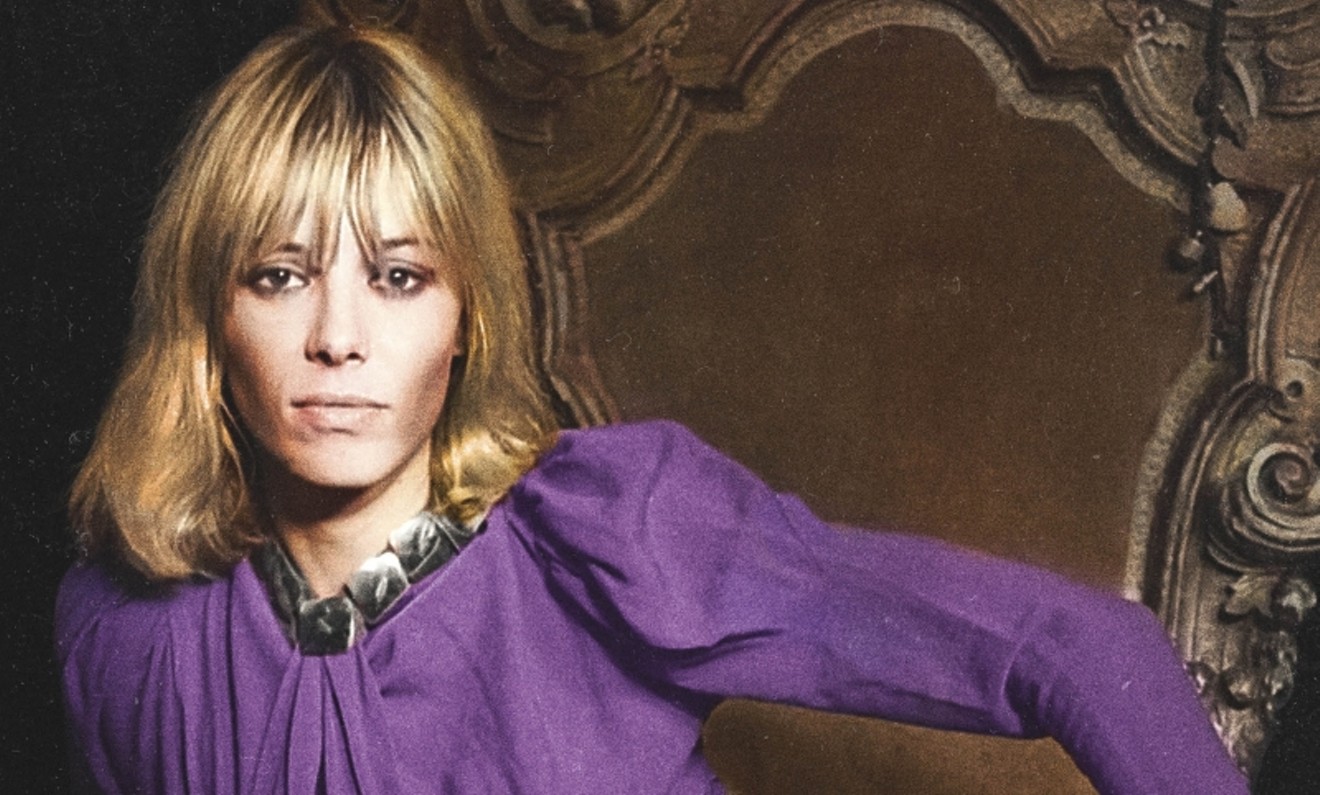Keith’s inamorata was a true character. In addition to being a painter and an actor, she was an artist in her very existence. She had some high-profile gigs, appearing with Jane Fonda in Barbarella and with Mick Jagger in Performance, but Pallenberg is best remembered by most as Keith’s muse, the inspiration for “Gimme Shelter” and the woman conducting the woo-woo’s on “Sympathy for the Devil.”

Marlon Richards, shown here in his father Keith's arms, is the executive producer of a new film about his mother, Anita Pallenberg.
Photo courtesy of Magnolia Pictures
Pallenberg, who died in 2017, was of German-Italian ancestry and lived in Rome during the early part of her life, working as a model and hanging out with film directors Federico Fellini, Luchino Visconti and Pier Paolo Pasolini. She met the Stones in 1965 when the band was performing in Munich. Pallenberg began a relationship with Stones guitarist Brian Jones at that time, later leaving him for Richards after Jones became physically abusive. Pallenberg and Richards ended their romantic relationship in 1980 but remained on friendly terms thereafter.
Key to Bloom and Zill’s efforts was the cooperation of Pallenberg’s two children, Marlon Richards and Angela Richards, who provided a wealth of previously unseen material for the film. Bloom and Zill were given access to family photos, home movies and the draft manuscript of Pallenberg’s unpublished memoir.
Consequently, the film contains material that will be new to even the most hardcore Stones fan. “I had never seen anything like it,” Zill says. "I’m a huge music fan, but I also came up in documentary filmmaking, doing archival research, so I love archival footage. So to dive into that was just incredible. We are terribly aware that they are not professional cinematographers by any stretch of the imagination, and that they were on all sorts of drugs shooting this film. There was an exciting element to it, but it was also like mining for gold to get a shot that was held long enough to even be able to recognize who was in the frame.”“Her sense of humor and her intelligence were what struck me and made me, honestly, sort of fall in love with her and become so fascinated by her."
tweet this
“We also had photographs that I love,” Bloom adds. “Some of the photographs of Anita with the kids, those, for me, were the real deal. You don’t [usually] get to see Keith on the sofa with both kids, or Anita on the balcony giving them breakfast or something. Marlon was so trusting like that. We went to his house, and he opened the family album. That was really a privilege.”
The filmmakers believe it is significant that two women made the documentary. “Not that men can’t appreciate her story,” Bloom says, “but it’s such a complicated female-protagonist story. Being not only a strong, independent groundbreaker but also a mother. And living in this time when women weren’t given equal space as men, professionally. There are some women’s stories that men can tell, but this felt so sensitive. Sometimes we meet men who are like, ‘Oh yeah, she was that groupie.’ And it makes our hair stand on end.”
Since Marlon Richards is one of the executive producers of the film, the question of objectivity comes into play. What was the filmmaking process like? Did Marlon request an editorial voice? Both women shake their heads emphatically. “He really didn’t,” Zill says. “There was an enormous amount of trust. There was an ongoing dialogue when we were making the film. But he didn’t see a cut of the film until the very, very end.
“I felt an enormous amount of pressure to get it right,” Zill continues, “because there was the gift of this incredible access and material, and there’s an inherent level of intimacy with that material, and the trust of Marlon, saying, ‘Here, go off and make a movie about my mother.’ I think we both felt Anita on our shoulders, from the grave, saying [shaking her finger], ‘You better get this right!’”
Being that neither Bloom nor Zill was a dedicated Stones fan prior to their work on the film, what themes leapt out at them while initially sifting through the trove of material? “Just how smart and funny Anita is,” Zill says. “Her sense of humor is incredible. I knew of her, sort of peripherally, but I didn’t really know her, and I feel like getting to watch the footage and speak to Marlon and read her words was really the closest approximation that you can get to know someone in this way.

According to filmmaker Svetlana Zill, Anita Pallenberg was an "anarchic force of energy."
Photo courtesy of Magnolia Pictures
Some Stones observers have gone so far as to say that, for a time, Pallenberg was, in essence, a member of the Rolling Stones. Do the filmmakers concur? “Yeah, I would,” Bloom says. “You know, when the Rolling Stones were a merry band of outlaws, in their earlier days, when it was all about chemistry and making music and a tight-knit group of very creative people.
“I think that she did have an incredible influence on them,” Bloom continues, “and she was central to them. They all sort of influenced each other. She was very creative and knew music. Her dad was a classical musician. She knew jazz. She was more traveled, she knew about art, and she introduced a lot of people to a lot of people. So I would certainly say, for a period of time, that she was.”
“I feel that she was essential to them,” Zill says. “I don’t know if she was ever fully one of them. She kind of gets left behind at some point, like she’s not on the road at a certain point. When she has kids, it’s like she can’t be one of the boys anymore. But I think she was an essential ingredient to them. It’s like she is the essence of rock and roll, to the point where she’s actually a proto punk. She is this anarchic force of energy that I think was essential to the Stones for that period of time.”
Catching Fire: The Story of Anita Pallenberg, directed by Alexis Bloom and Svetlana Zill, is available on a number of streaming platforms, including Prime Video, Apple TV, YouTube and Google Play.







